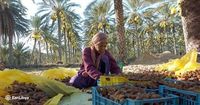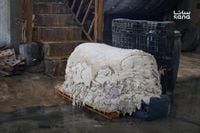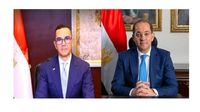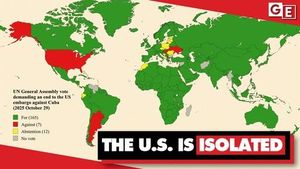In the heart of Damascus, a centuries-old craft that once stood as a pillar of Syria’s economy is now at a crossroads. The leather tanning industry, renowned for its rich heritage and economic significance, faces mounting challenges that threaten its very existence. Once a robust sector providing jobs, supporting exports, and preserving a slice of the nation’s identity, Syrian leather tanning is now grappling with fierce foreign competition, dwindling exports, and rising production costs.
According to a recent report by SANA published on October 19, 2025, the Syrian Ministry of Economy has rolled out a new national investment strategy. The plan aims to revitalize the country’s investment environment, with a sharp focus on agriculture, industry, and tourism. The ministry underscored the private sector’s vital role and stressed that boosting investment is key to economic growth. But for the tanning industry, the road ahead is anything but straightforward.
Bilal Ayoub, head of the Tanning Committee at the Damascus and Rural Industry Chamber, painted a nuanced picture of the sector’s evolution. "Syrian leather industries have witnessed remarkable development in recent decades," Ayoub told SANA. He explained how traditional methods, like vegetable tanning, have merged with modern chrome tanning techniques, enabling producers to keep pace with global trends. Yet, Ayoub was quick to highlight growing concerns about environmental and ethical responsibility—especially as the world becomes more wary of the chemical pollution associated with chrome tanning.
But the industry’s woes go beyond environmental anxieties. Ayoub pointed to "unfair competition from imported products, especially cheap plastic footwear from Asian markets," which he said has dealt a severe blow to local producers. The declining purchasing power of Syrian consumers has further shifted demand toward less expensive, lower-quality goods, undermining the appeal of high-end natural leather products.
Another thorn in the industry’s side is the lack of effective marketing and limited participation in international exhibitions. Ayoub noted that "the main obstacles hindering the growth of this industry include inadequate promotion and insufficient introduction of Syrian products abroad." He also mentioned that previous export bans and restrictions under the former regime pushed Syria out of key international markets, resulting in missed export opportunities and diminished global presence.
To pull the sector back from the brink, Ayoub has called for a comprehensive national development plan. This blueprint, he argues, should feature systematic government support for exports and robust promotion of finished leather goods—whether through digital platforms or international trade fairs. "It’s crucial to enforce clear labeling in domestic markets to distinguish between natural and synthetic leather products," he said, emphasizing the need for transparency and consumer protection.
Ayoub also stressed the importance of providing easy-access loans to help factories modernize, introducing eco-friendly technologies to improve product quality, and organizing specialized training seminars to boost workforce skills. He suggested that a practical mechanism to reduce shipping costs to neighboring markets would provide a much-needed lifeline for exporters. Italy, he noted, remains the top destination for Syrian tanned leather, with Iraq and several Gulf countries also showing strong demand for quality leather goods.
But the sense of urgency is palpable. Jihad Al-Shami, deputy head of the Tanning Committee, voiced deep concern about the sector’s future. "This ancient industry is facing a real crisis that threatens to shut down many factories in the near future," he warned in his remarks to SANA. Al-Shami attributed the decline to a complex web of challenges that have battered both local and international markets.
According to Al-Shami, Syrian leather processing relies on three main tanning techniques: vegetable, chrome, and mixed methods. The choice depends on the type of hide—most commonly cow, goat, and sheep—and the desired final product. He described the modern tanning process in detail: "It starts with salting or freezing the hide to prevent decay, followed by soaking and washing to remove impurities. Next, specialized machines strip away flesh and fat, then the hides are soaked in chemical solutions like lime and sodium sulfide to remove hair, before the actual tanning with plant or chrome agents begins." The process wraps up with dyeing, finishing with oils for flexibility, and finally drying, ironing, and polishing to prepare the leather for industrial use.
Al-Shami argued that opening the doors to imports of cheap synthetic and fabric shoes has inflicted direct harm on the domestic leather industry. Add to this the exodus of skilled workers and the shrinking purchasing power of the average Syrian, and it’s clear why the sector is struggling. He called for urgent measures, including the establishment of automated slaughterhouses, secure sources of industrial water, and specialized technical training institutes. Al-Shami also advocated for export promotion, external marketing support, and concessional loans to import cutting-edge technologies.
Despite these setbacks, there are still glimmers of hope. Al-Shami revealed that Syria currently exports semi-processed sheep hides—such as pickled and wet-blue leather—to Italy and India, and vegetable-tanned cow hides to the Italian market. These markets, he said, remain crucial for keeping the industry afloat.
Wafaa Abu Labda, a member of the Damascus and Rural Industry Chamber’s board and head of its chemical sector, echoed the call for revitalization. She urged all stakeholders to "make every effort to advance leather manufacturing and keep up with the demands of local and global markets." According to Abu Labda, the chamber is prioritizing a thorough analysis of the sector’s challenges to develop clear strategies for quality improvement. She emphasized that "supporting exports is a pivotal first step to stimulate the industry," highlighting the importance of active participation in international exhibitions to promote Syrian products and strengthen their global standing.
Meanwhile, the government’s new national investment strategy, as reported by SANA, aims to create a friendlier climate for investors by enhancing digital transformation, upgrading investment infrastructure, and fostering cooperation between the public and private sectors. The Ministry of Economy hopes these reforms will significantly boost investment volumes and spark growth across key sectors, leather tanning included.
Still, the question remains: will these ambitious plans be enough to rescue a once-mighty industry from the edge of decline? For now, Syrian tanners are holding onto hope—blending tradition with innovation, and fighting to keep their craft alive in an increasingly competitive world.






